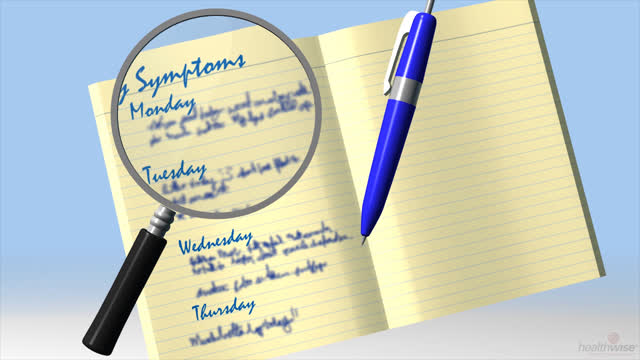Top of the pageActionset
Heart Failure: Watching Your Fluids
Introduction
Too much fluid in your body can make it harder for your already-weakened heart to pump. Your doctor may prescribe a diuretic to help get rid of excess fluid. He or she may also suggest that you limit liquids so that your body can get rid of the extra water and sodium.
- Monitoring your fluid intake can reduce complications and hospitalizations.
- All foods that melt (such as ice cream, gelatin, and flavored ice pops) and foods that contain a lot of liquid (such as soup) are considered liquids. Be sure to count these in your daily intake.
- Space your liquids throughout the day. Then you won’t be tempted to drink more than the amount you are allowed.
- To relieve thirst without taking in extra water, try chewing gum, sucking on hard candy (sugarless if you are diabetic), or rinsing your mouth with water and spitting it out.
How can you be sure that you are getting enough fluid?
Your doctor will tell you how much fluid you should be taking in every day. Recommendations may range from about 1500 mL (1.6 qt) to 2000 mL (2 qt), or about 48 fl oz (1420 mL) to 64 fl oz (1893 mL) a day. Here are the amounts of fluid in some common equivalent household measures:
|
Household measure |
Equivalent fluid ounces |
Equivalent milliliters (mL) |
|---|---|---|
|
1 tablespoon of fluid |
½ fluid ounce |
15 mL |
|
½ cup of fluid |
4 fluid ounces |
About 120 mL |
|
1 cup of fluid |
8 fluid ounces |
About 250 mL |
|
1 quart of fluid |
32 fluid ounces |
About 1,000 mL (1 liter) |
It is important to know how much fluid your regular drinking glasses hold. You can find out by filling your drinking glass with water and then measuring the amount in a measuring cup. After you know this, you won’t have to measure every time.
Besides water, milk, juices, and other beverages, some foods contain a lot of fluid. Any foods that will melt (such as ice cream, gelatin, or flavored ice treats) or foods that have a lot of liquid (such as soup) should also be measured and counted as part of your fluid intake.
How to keep track of your fluid intake
One method for keeping track of your fluid intake is to have an empty container that holds the amount of fluid you are allowed for the day. As you drink fluids, put an equal amount of water into the container until you reach your fluid limit. When the container is full, you have reached your fluid limit and should stop drinking.
Another method for keeping track of your fluid intake is to allow yourself 8 fl oz (1 cup) of fluid at each meal [3 x 8 fl oz = 24 fl oz, or 3 cup]. You can then fill a container with water to keep in your refrigerator that contains the balance of your fluid allowance. For example, if you are allowed 48 fl oz (6 cup) of fluid a day, you could have 24 fl oz (3 cup) divided into three meals and then another 24 fl oz (3 cup) in the refrigerator to drink during the day. If you drink other beverages besides water (such as coffee, juice, or soft drinks), then you would need to pour out an equal amount of water from your container in the refrigerator.
Credits
Current as of: April 9, 2019
Author: Healthwise Staff
Medical Review:Rakesh K. Pai, MD – Cardiology, Electrophysiology & Martin J. Gabica, MD – Family Medicine & Adam Husney, MD – Family Medicine & George J. Philippides, MD, FACC – Cardiology
Current as of: April 9, 2019
Author: Healthwise Staff
Medical Review:Rakesh K. Pai, MD – Cardiology, Electrophysiology & Martin J. Gabica, MD – Family Medicine & Adam Husney, MD – Family Medicine & George J. Philippides, MD, FACC – Cardiology
This information does not replace the advice of a doctor. Healthwise, Incorporated, disclaims any warranty or liability for your use of this information. Your use of this information means that you agree to the Terms of Use. Learn how we develop our content.






